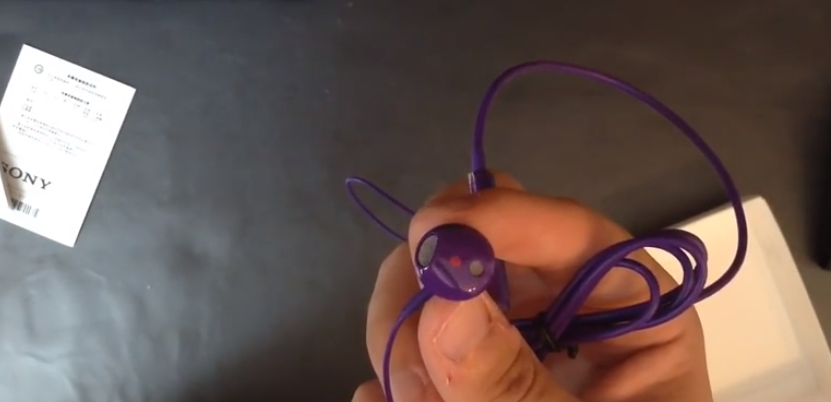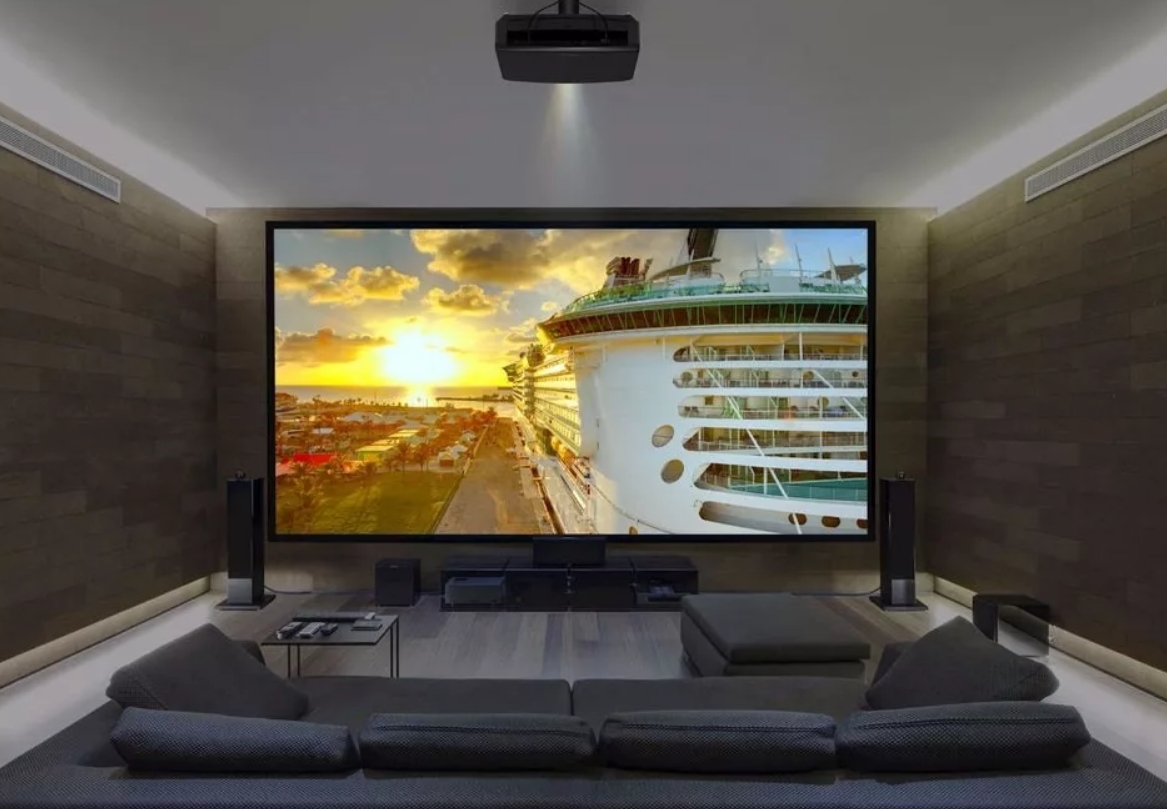Rating of the best surge protection devices (SPD) for 2020
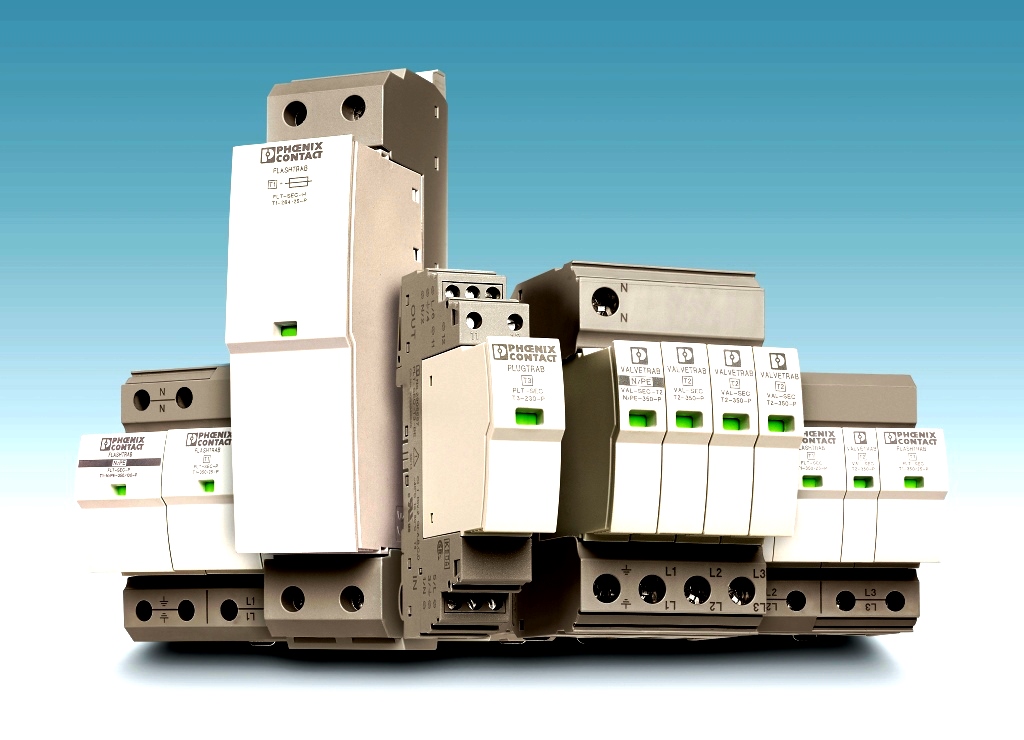
Installation of popular models of SPDs is carried out between the ground and the supply wires. At the moment of a sharp voltage surge, the structure removes the overvoltage impulse by a sharp decrease in resistance. Due to this, there is a rapid and significant decrease in impulse voltage, which is dangerous for electrical devices. Installation between earth ground and telecommunication lines is also possible. In addition, an SPD is lightning protection.
SPD - what is it and what is it for
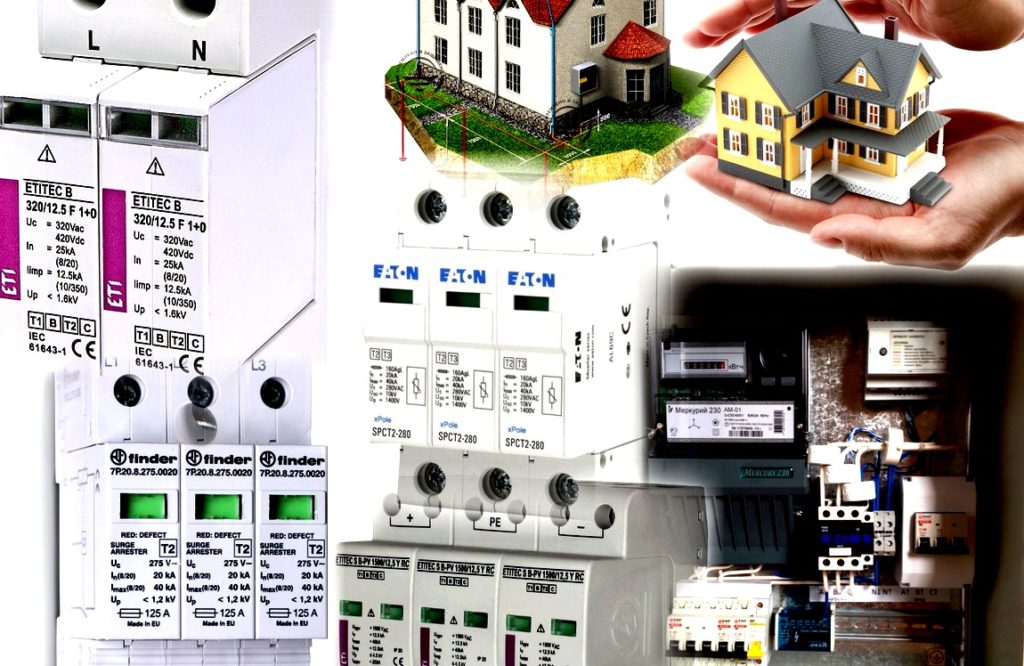
The occurrence of impulse noise in the network is considered quite common. Similar phenomena can occur when turning off or turning on powerful devices, as well as during bad weather. The network is an RLC circuit in which fluctuations occur regularly, which contribute to the occurrence of voltage surges. In digital and low-current circuits, such a defense is extremely relevant. We are talking about switching interference that easily passes through various types of power supplies.
The indicator of the maximum security is possessed by "flyback converters". In them, the transformer energy flows to the load when the structure is disconnected from the network.
In European countries, such a fence is considered mandatory, therefore, even during the construction of a new house or apartment block, noise suppression filters, SPDs and other protection modules for power supply systems are installed. It should be noted that the quality of their networks is much higher, and the thunderstorm areas are somewhat less.
These models have been especially popular in the last 20 years, when more new high-performance transistors began to appear on the market. It is these units that are extremely sensitive to any surges in reverse voltage indicators. Equipment with similar functionality is used in almost all switching power supplies, the power of which does not exceed 1 kVA. They are used as connecting elements on the network (primary) side.
To limit the voltage between the ground and neutral conductors, this kind of automation is also used. Low energy interference can occur when switching from reserve to neutral of the Automatic Entry. The second, at the moment of a change in position, will remain "in the air", and anything can stay on it.
Why do we need
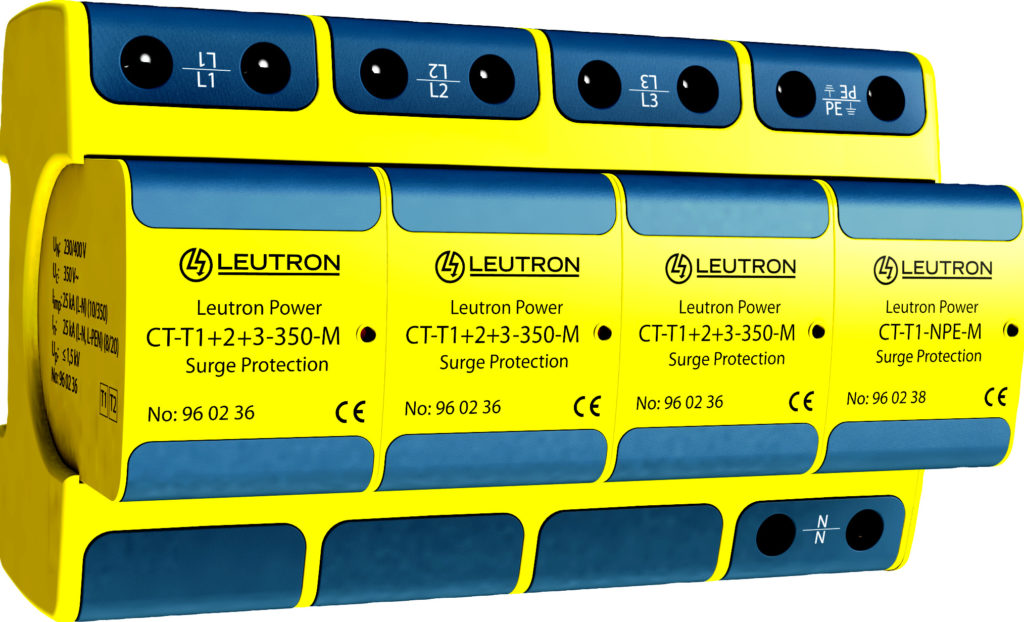
SPDs are used to smooth out noise arising in the network, to stabilize the operation of information systems and from surges that can be caused by the indirect or direct impact of severe bad weather (lightning). High frequency and low energy interference is not uncommon in large cities and remote settlements.
What are they intended for:
- Remote type short circuit protection. This happens as a result of a short circuit.
- Protection of electricians against surges. Often the reason lies in the switching processes that are observed in the network. Associated with switching off and on devices with a large load (inductive). Examples are welding and power machines, powerful electric motors.
- Lightning shock protection. At such a moment, all the equipment that was connected to the network fails. The replacement will cost a whopping sum. In order to avoid such expenses, the best SPDs from the best European manufacturers are installed.
The equipment has several names:
- OIN - impulse voltage limiters;
- Surge arresters - network surge arresters.
However, this does not affect the principle of operation or functionality.
What are
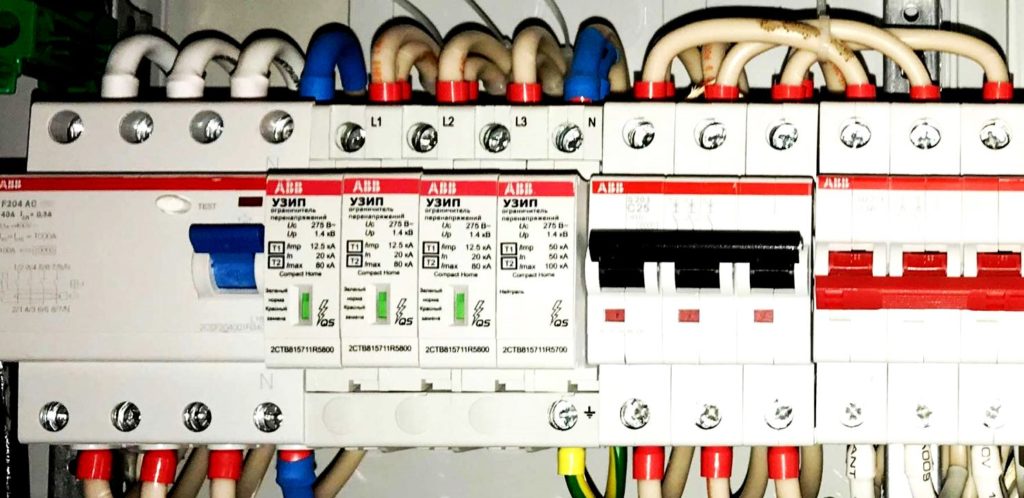
There are several criteria for choosing such equipment, however, the main one is considered to be the compliance of the selected unit with the existing GOSTs, namely No. 51992-2011, which has a link to the international document "IEC 61643-1-2005". It describes the main types of SPDs. What to look for when buying an SPD, and what selection criteria should be considered when purchasing security equipment? We suggest that you familiarize yourself with the information in the table.
| A type | Recommendations for use | Areas of use |
|---|---|---|
| Class I | Installation is carried out in the main switchboard or ASU at the entrance to the building. Recommended for use in the arrangement of ASPs of industrial and administrative buildings, as well as apartment and residential buildings. | Also designated "B". It is used as protection against lightning strikes into the system, switching and atmospheric overvoltage. A separate device is installed for both detached and overhead buildings. Also, according to not only buyers, but also specialists, this type of equipment is required for buildings with an installed lightning rod and structures with a high risk of indirect and direct lightning effects. The rated indicator of the discharge current is 30-60 kA. The nominal waveform is 10/350 μs. |
| Class II | Installation is carried out in distribution boards of offices and apartments. The main function is to protect against residual impulses that have not been neutralized by the first class device. | Also designated "C". It is used to protect structures from residues of communication and atmospheric overvoltages that have passed through devices of the first type. The rated indicator of the discharge current is 20-40 kA. The nominal waveform is 8/20 μs. |
| III class | It is used for fencing "sensitive" equipment (laptops, refrigerators, TVs). Often used in conjunction with medical equipment and IT. | Has the designation "D". It is used to protect the system from residual overvoltages of the switching and atmospheric types that have passed through the device of the second type. Installation site - sockets, junction boxes and electrical equipment. Examples include lighting control systems and personal computers. The rated indicator of the discharge current is 5-10 kA. The nominal waveform is 8/20 μs. |
Which company is better to buy
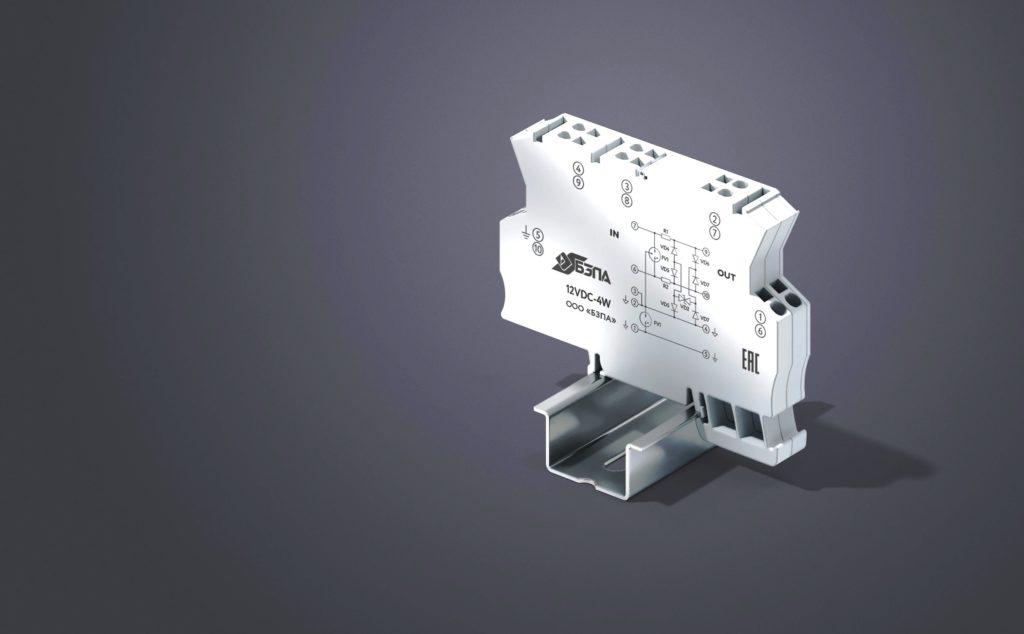
It should be noted that the market is full of ready-made shields, which can simultaneously include several of the above-described surge protection modules. The classes are used differently, depending on the company (brand), sales market and target audience. The unit is mounted on the wall (in the panel), and the connection is made directly to the existing wiring.
The final cost will be affected not only by the reliability of the design, but also by the mark-up for the "brand". Budget models belong to the category of the most common mistakes when choosing such equipment. Don't skimp for your own safety. It is better to give preference to proven firms and branded models that have received numerous positive reviews from customers. The better the manufacturer has established itself in the market, the higher the cost of the product will be.
The rating of manufacturers is as follows:
- ABB.
- Hakel.
- OBO Bettermann.
- Schneider Electric.
- Phoenix Contact.
- Citel.
- Dehn.
It should be noted that most manufacturers have several SPD modules in their assortment designed for low-voltage equipment. Schneider Electric and ABB are examples of the production of equipment of all classes.
Do not forget about the numerous fakes that overwhelm modern markets. In addition to the description, the online store should check for a quality certificate and a correctly completed product passport. The manufacturer of quality modules in the Chinese market is exclusively handled by TYCOTIU.
Rating of quality class I models
ABB OVR T1-3N 25-255 TS
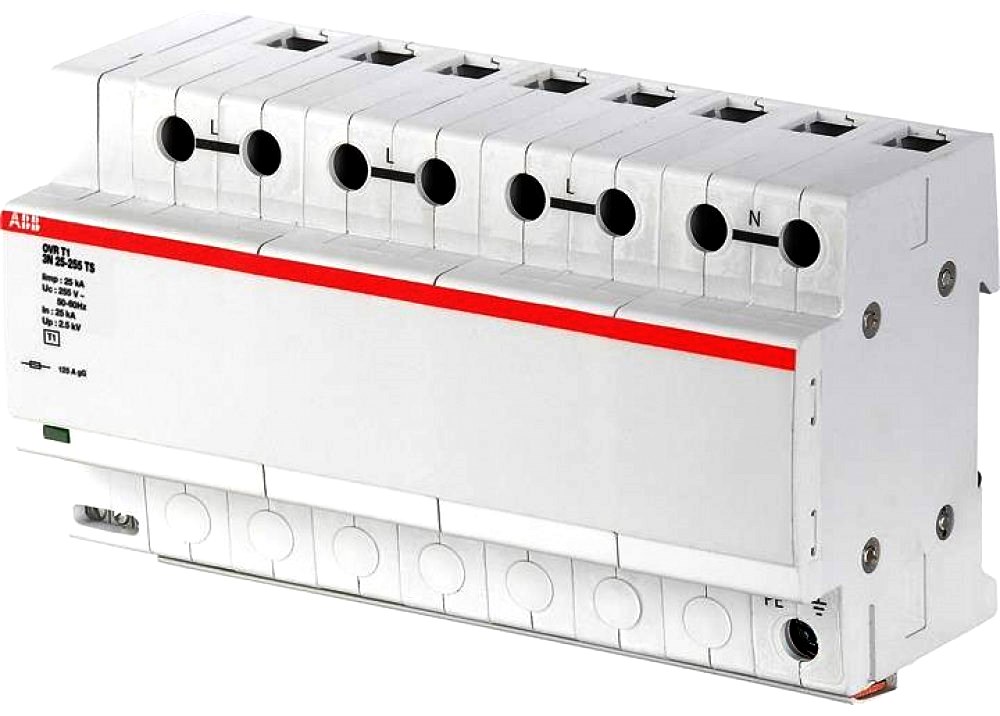
A model with excellent performance, however, it cannot be ordered online. Such expensive equipment is made exclusively to order. Installation takes place in a home or business. Product size (constructive) - eight modules. For installation, you will need a lot of free space in the shield itself. TT - device configuration. Residual current suppression designation - 50 kA. For the manufacture of the case, a high-strength material is used that is not afraid of mechanical stress. He is also not afraid of high temperature.
The average price is 66,000 rubles.
- high-quality element base;
- durable outer layer material;
- long warranty period;
- assembly;
- efficiency;
- reliability.
- high price.
OBO - Bettermann "MCD 50-B" 3 + 1
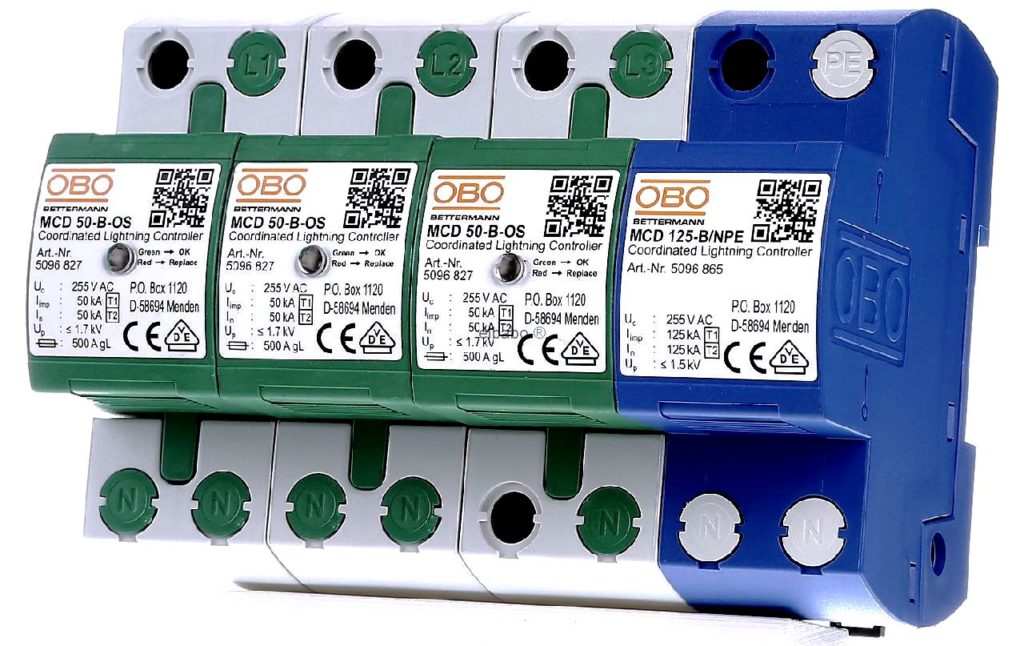
The design belongs to the category of combined, equipped with four poles. It is used in TT and TN-s networks. The kit contains everything you need for a quick installation. No auxiliary elements are required. You only need free space in the switchboard. For the manufacture of the case, a durable material is used that will not melt during the heat generated by the equipment. The indicator of the down conductor is 125 kA for each of the available poles. How much does the unit cost? About 88 thousand rubles.
- full compliance with existing standards;
- high operational life;
- multitasking;
- high-quality assembly;
- high efficiency.
- price.
DEHNsecure DSE M-2P 60
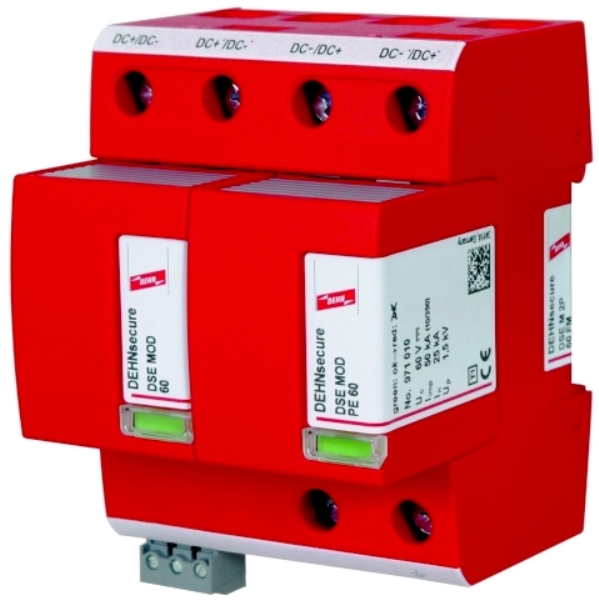
The design is two-pole. It is used both in production and in residential buildings. Connection diagram - 1 + 1. The capacity indicator is quite high - 25 kA. The design provides for the possibility of energy coordination with devices of the second class. This aspect made it possible to achieve smooth operation in the event of any emergency situation. The permissible voltage is 60 V. To simplify the use of the unit, a remote signaling is provided by the manufacturer.
The review of the model showed that its body is made of durable materials that are not afraid of mechanical and natural influences. The equipment operates at a temperature of -40 ° C - + 80 ° C. Protection class - IP-20. This allows installation in most factories and production halls. The design has passed all the necessary tests and has a corresponding quality certificate. It should also be noted that it is resistant to strong vibrations that may arise during the use of the equipment.
It should be noted that the indisputable advantage of the model is its small size and weight. This allows installation in the shortest possible time and with a small amount of free space.
The system for removing the modules used is considered unique, which allows you to quickly and without any interference fix or remove the element. For more comfortable operation, the installation of light indication was provided, which allows you to monitor the status of the device. Where to buy a unit? Directly from the manufacturer. For the price, the design is more than affordable - 45,000 rubles.
- resistance to strong vibrations;
- the presence of light indication;
- ease of replacement of modules during repair;
- the ability to work with installations of the second class;
- throughput - 25 kA;
- the design is based on the use of spark gaps.
- not identified.
BCS NX-1012
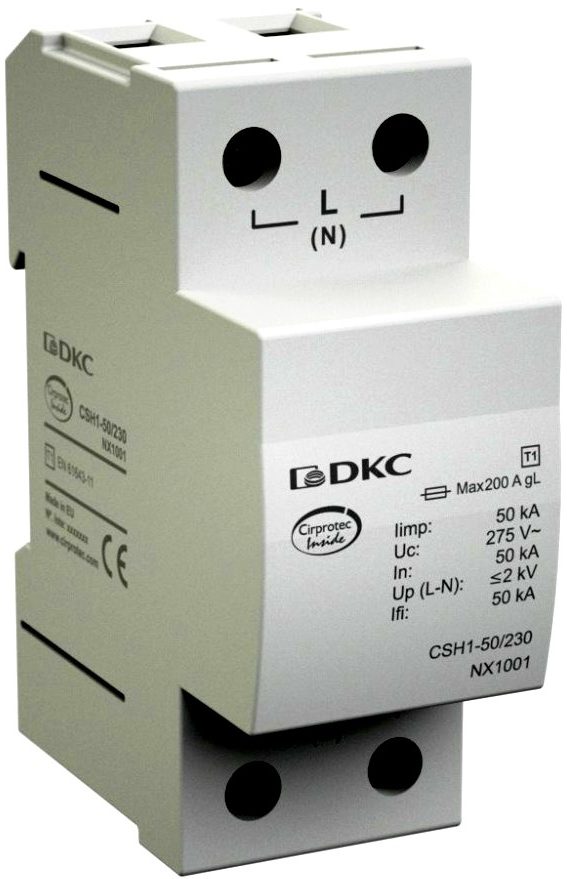
Inexpensive structures used in small production lines or in a domestic environment. For manufacturing, only high-quality materials are used, which are a guarantee of the reliability and durability of the equipment used. A distinctive feature of the novelty is that the product is made exclusively to order. Thanks to this, you should not worry about the quality of the offered product. The designation for the rated surge current reset is 50 kA. Thus, the model belongs to the first class constructions.
Before choosing this model, it should be noted that it has a compact size, so a minimum of free space is required in the dashboard to install it.
The approximate cost is 9,000 rubles.
- made exclusively to order;
- excellent build;
- possibility of installation in the house;
- efficiency;
- acceptable cost.
- mark "up to 50 kA".
Schneider Electric PRD1 Master C1 SPN-3

An excellent offer from one of the world's best manufacturers. Such a device is guaranteed to protect not only a production facility, but also a residential building. Among the numerous advantages, it should be noted that the device can operate with a TN-C type grounding system. The designation of the working pressure (nominal) is 230 V. Such a device will perfectly cope with lightning. PBT is used to make the outer layer of the device. Composition of contacts signal type 1 SD. Thanks to its design features, the device is easy to fix and remove. In addition, the risk that it disconnects accidentally is minimal. Experts recommend installing this type of protective equipment in private houses. Advice from "experts" will cost the new owner 70-75 thousand rubles.
- durability;
- practicality;
- reliability;
- efficiency;
- high build quality.
- high price;
- impossibility of self-troubleshooting.
Best Class II Models
DEKRAFT OP101-1PN-080-B-440
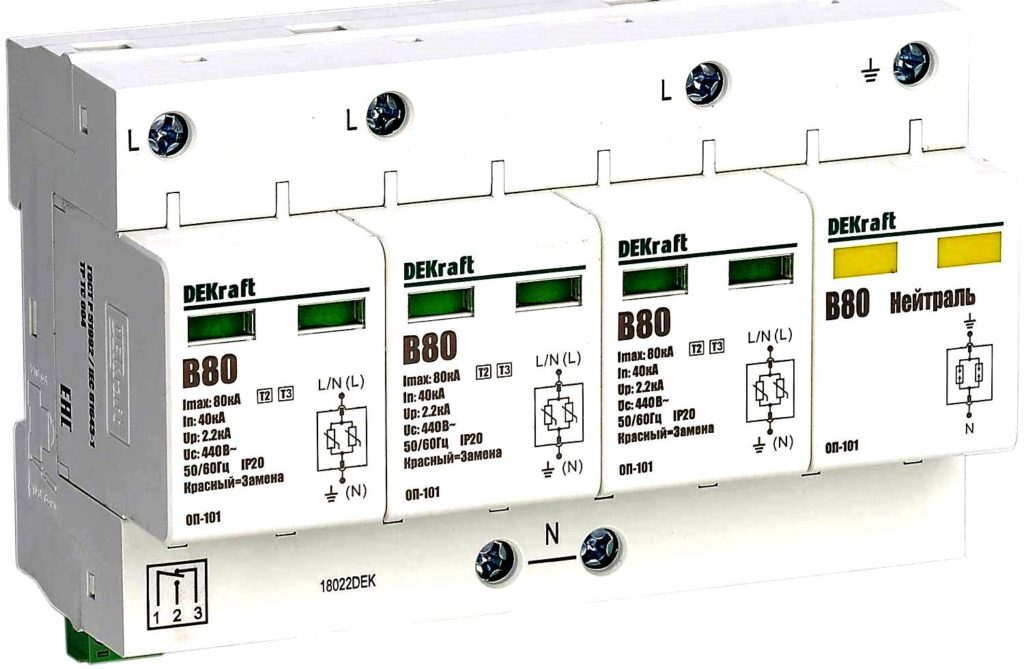
A budget model that is used to protect household appliances. Installation is carried out on a DIN rail. Takes up relatively little space (four modules). Designed for IT type systems. The rated voltage is 400 V. The brand products are guaranteed, which only confirms the reliability and quality of the goods. Protection voltage indicator 2.2 kV.
The buyer will cost 4500 rubles.
- high operational life;
- famous brand;
- efficiency;
- acceptable cost.
- lack of service centers.
Schneider Electric 3p. + N 20 kA Easy9
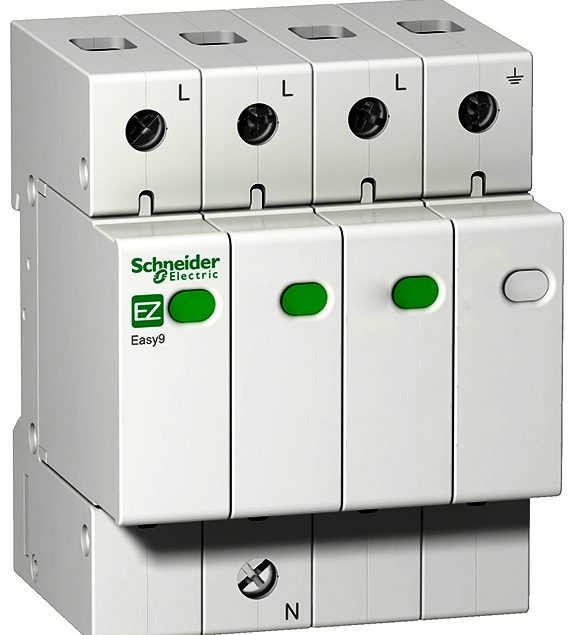
Excellent purchase from a renowned manufacturer. Installation is possible both on the territory of a private house and enterprises. With such equipment, no lightning strikes are scary to electrical devices. It functions with three-phase networks, where the rated voltage reaches 400 V. It is worth noting that the maximum discharge current indicator will be 20 kA. Such factors have a favorable effect on the reliability and durability of the equipment used. For convenience in subsequent use, the manufacturer provides for a light indicator on the front panel of the product. It indicates the status of the instrument. The indicator of the rated reset of the impulse current is 10 kA (time indicator 8/20).
Price - 9500 rubles.
- acceptable cost;
- compactness;
- high operational life;
- a well-known and time-tested manufacturer;
- reliability.
- not identified.
ABB OVR T2 4L 80-440s P TS QS
Quite a popular model on the market. Helps reduce the negative effects of discharge current. A special feature is the IT configuration of the system. To increase the safety indicator, the device was equipped with additional fuses that will not allow the system to fail due to overloads. An optical signal is used. Mounted on a DIN rail, which is extremely convenient.There are four modules in the device, which greatly facilitates installation and helps to save free space in the panel. The nominal discharge rate is 20 kA.
Cost - RUB 25,000
- high-quality assembly;
- convenient configuration;
- high level of protection;
- availability of a backup fuse.
- cost.
RIF-E-I + II 275 / 12.5 s (3 + 1)
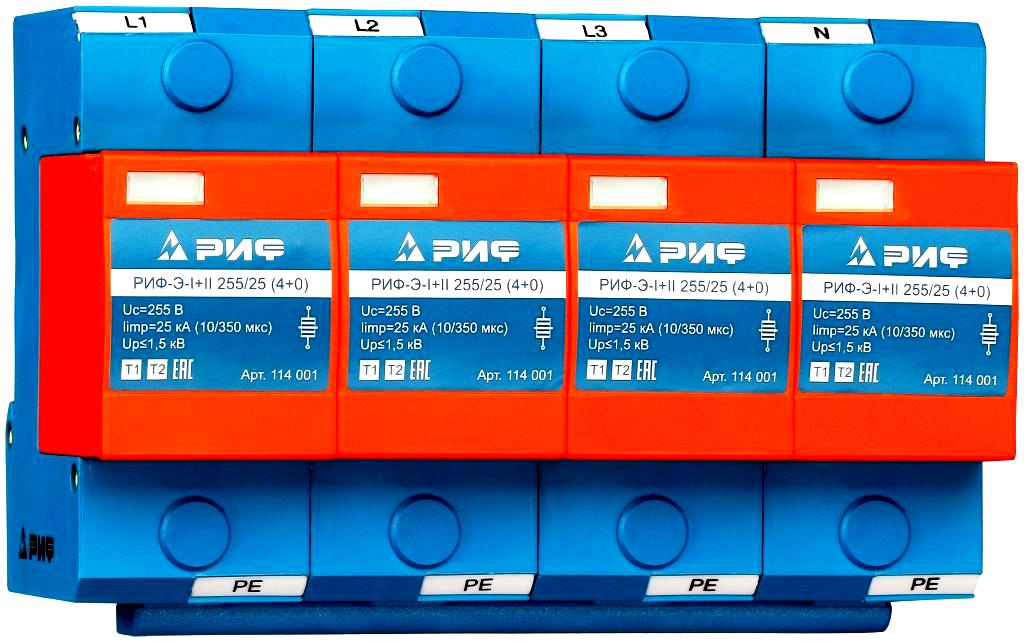
A combined type design, which is preferable to install on the territory of a private house. The product is based on a replaceable varistor module. The device can withstand loads that are designed for class II and I designs. That is why the used electrical devices will be in complete safety throughout the entire operational life of the product. It is used in conjunction with TT and TN-S systems. The indicator of the rated discharge current is 50 kA. The established protection class is ip20 (a universal indicator for most systems). Mounts directly on the rail. Works at temperatures from -40 ° C to + 80 ° C.
The approximate cost is 13,000 rubles.
- high operational life;
- ease of installation;
- clear design;
- high protection class;
- the presence of a light indicator;
- the presence of a thermal release.
- absent.
The best class III models
RIF-E-III 320/3 (3 + 1)
The product belongs to the third class and is able to protect devices from high voltage surges. Rail mounted. Doesn't take up much space. Often installed on single-phase networks, however, there is the possibility of paired connection in combination with residual current devices. Thus, it was possible to increase the efficiency of this model. Standard plastic case.
The set will cost the buyer 3 thousand rubles.
- the ability to combine multiple devices;
- durability;
- high level of security;
- reliability;
- efficiency;
- practicality.
- not identified.
Albatros SPD 220/1000 AS
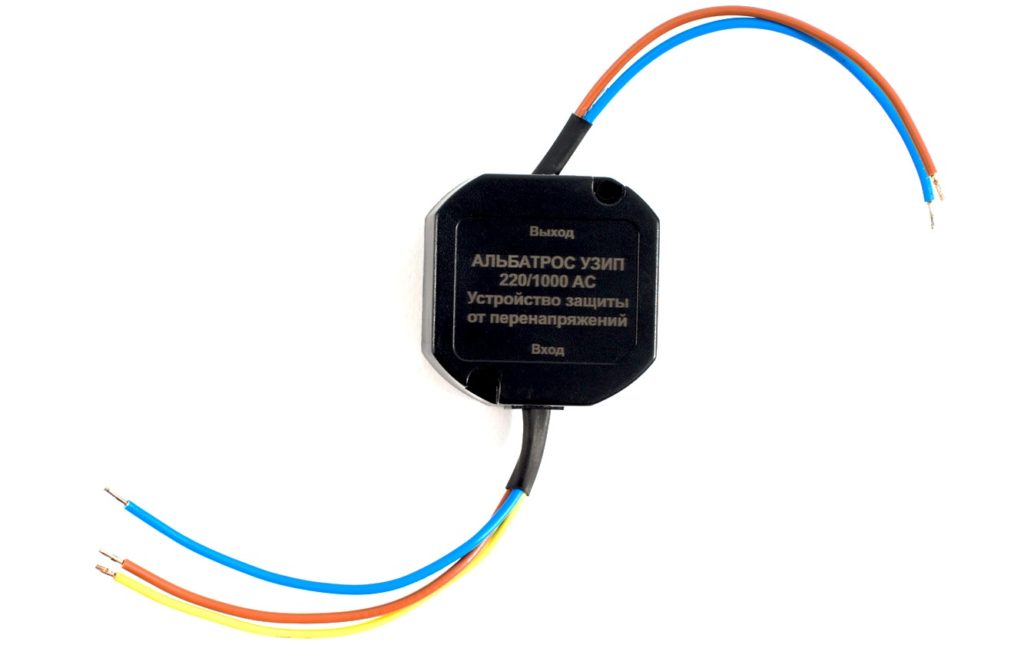
The device belongs to the third class. It will take about 25 ns to trigger. The indicator of the pulse discharge current (maximum) - 8/20 μs. It functions normally at temperatures from -40 ° C to + 50 ° C. Can be installed outdoors. Protection class - ip65. The limiting type of equipment is designed to protect equipment against unbalanced overvoltages, residual surges and current impulses in a single-phase network.
Used to protect:
- LED lighting fixtures.
- Garden lighting fixtures.
- High-mast lamps.
- Architectural lighting fixtures.
- Street lighting.
The cost of the kit is 1000 rubles.
- additional protection phase-neutral, neutral-earth and phase-earth;
- wide working range;
- completely sealed housing;
- compactness.
- short operational period.
OptiDin OM-I-3 + Nu-280 / 12.5 / R
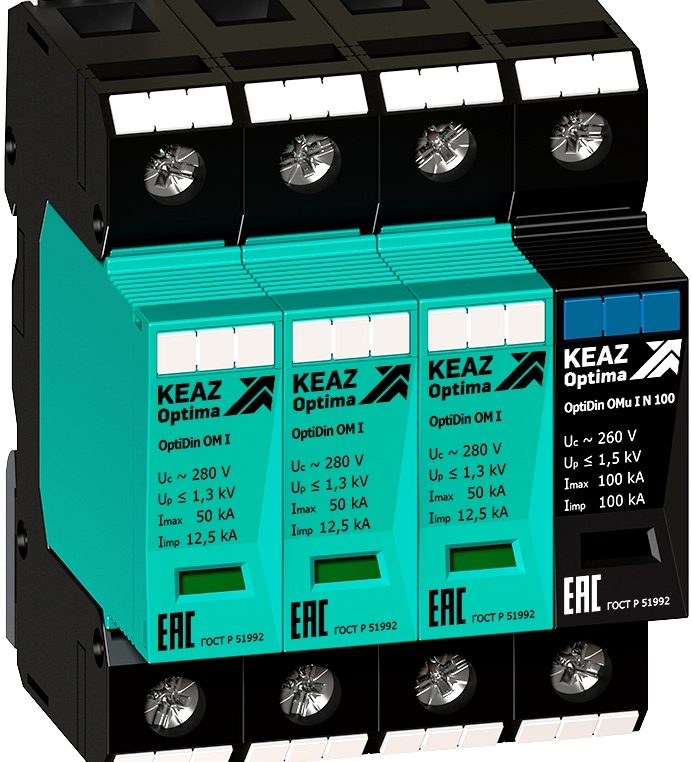
Power supply type - three-phase. The poles used are 3P + N. Overvoltage protection device of all classes. Dimensions: 97/70 / 70.5 mm. Indicator of rated voltage 230 V. Impulse current 10/350 kA. Permissible discharge current (maximum and nominal) - 8/20 kA.
The cost of the product is 18 thousand rubles.
- working range from -40 ° С to + 70 ° С;
- external conductors are front-wired;
- test class I, II and III;
- efficiency;
- there is a remote type alarm;
- durability.
- there is no residual current damping function;
- there is also no wear status indicator.
OBO Bettermann V10 Compact 385
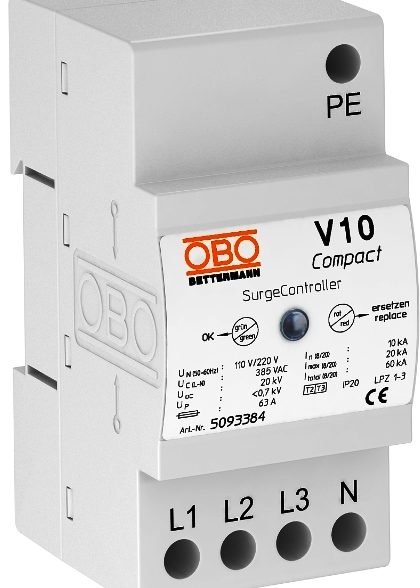
High-quality equipment from the German concern, which is mounted directly on the DIN rail. This helps to save extra space. The design is class II + III. A high power varistor is placed inside. Also installed is dynamic and thermal protection - fuse. Has a security level - ip20.
The price of the set is 13 thousand rubles.
- protective voltage 1500 V;
- acceptable cost;
- compactness;
- quality.
- fakes are widespread.
Conclusion
An SPD or surge protection device is a protective type of equipment. Similar problems often occur on electrical wires. Installation is carried out directly in switchboards or electrical cabinets. Capable of diverting overvoltage to the installed ground. There are models based on varistors and gas dischargers. Combined models can also be found on the market in which both arresters and varistors are used. In everyday life, structures are used to protect electrical appliances:
- operating from 220/380 V;
- individual use up to 1000 V;
- data networks 5-110 V.
new entries
Categories
Useful
Popular articles
-

Top rating of the best and inexpensive scooters up to 50 cubic meters in 2020
Views: 97661 -

Rating of the best materials for noise insulation for an apartment in 2020
Views: 95022 -

Rating of cheap analogues of expensive drugs for flu and colds for 2020
Views: 91751 -

The best men's running shoes in 2020
Views: 87681 -

Top ranking of the best smartwatches 2020 - price-quality
Views: 85091 -

Best Complex Vitamins in 2020
Views: 84801 -

The best dye for gray hair - 2020 top ranking
Views: 82406 -

Rating of the best wood paints for interior use in 2020
Views: 77202 -

Ranking of the best action cameras from China in 2020
Views: 75269 -

Rating of the best spinning reels in 2020
Views: 74827 -

The most effective calcium supplements for adults and children in 2020
Views: 72463 -

Top rating of the best means for male potency in 2020 with a description
Views: 68296


